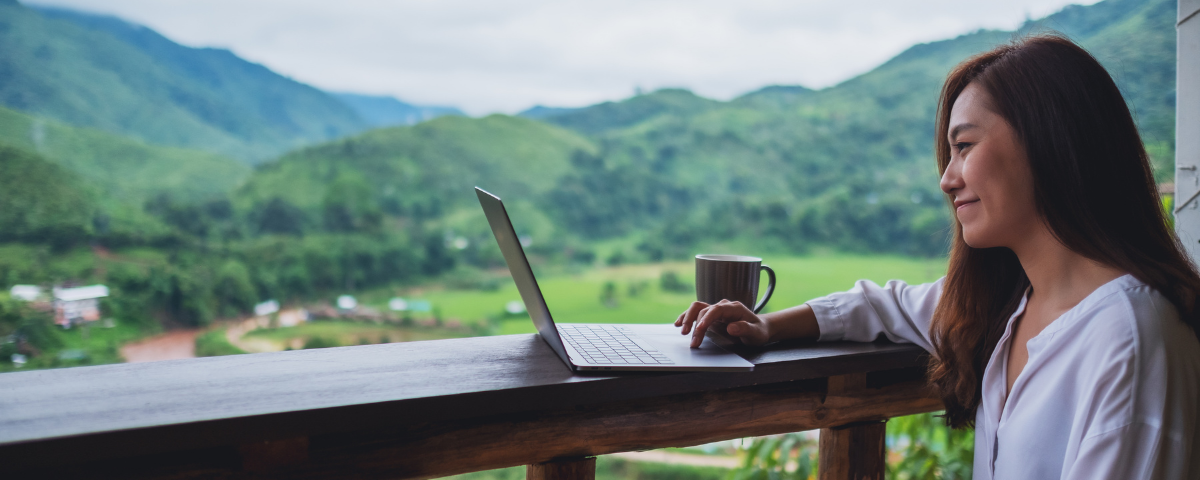By Gemma Greenwood, Director, Content Inc.
2022 is the officially the year of ‘bleisure’. Why? Because never before have the lines between business and leisure travel been so wonderfully blurred.
The pandemic made sure of that, teaching us all that we can work from home – and just about anywhere in the world – from desk to beach, kitchen table to sun lounger.
We have become accustomed to a new way of living, with nine to five no longer the norm; we snap up moments of leisure time while working and slot work commitments into downtime.
This fluidity of work-life balance has profoundly impacted traveller behaviour. Corporate travellers and those attending business events are making the most of their trips by exploring the destination they visit after hours, or by tagging on a few days of extra leisure time.
Commute-and-stays are also becoming big, according to a new report by Accor, while some companies are even changing their business travel policies, incentivising their employees, and taking care of their wellbeing, by offering them ‘bleisure’ and ‘workcation’ trips.
Many travellers are taking it one step further, opting to relocate to another destination for a few weeks, months, or longer, bringing their families with them.
While some have been quick to respond, with destinations like Dubai launching a successful virtual working programme and major hotel groups jumping on the long-stay trend by offering suitable accommodation options, others in the travel industry have been slower to react.
In my opinion, the sector has been generally pessimistic about the rebound of business travel, and many have focused on meeting pent-up demand for leisure travel instead.
But when you consider recent figures, they are missing a trick to target business travel, and therefore bleisure travel, because overwhelmingly, most corporate trips now involve leisure add-ons in some shape or form, from activities and excursions to extended stays.
Business travel expenditure in the Middle East is forecast to rise by 32% this year, following a predicted 49% increase in 2021, according to a World Travel & Tourism Council (WTTC) report.
Interestingly, the increase in business spending for the full year is expected to have outpaced spending on leisure travel by 13%, 10% and 1% in the Middle East, Europe and Africa respectively, as Danielle Curtis, Exhibition Director ME – Arabian Travel Market (ATM) points out, citing WTTC’s findings.
At the same time, the GBTA BTI Outlook – Annual Global Report and Forecast predicts global expenditure on business travel to have rebound 14% year-on-year to US$754 billion in 2021.
North America led business travel recovery last year with activity up 27%, followed by the Middle East and Africa (MEA), Latin America and Asia Pacific, with between 15% and 20% growth.
What’s more, 52% of global CFOs and other executives interviewed by the GBTA anticipate business travel spend to rebound to 2019 levels as early as this year. The report predicts a full recovery in 2024, ending the year on pace with the 2019 pre-pandemic spend of $1.4 trillion, and a year sooner than previously forecast.
The writing, or rather the figures, are therefore on the wall – business travel is back, providing untold opportunities for the tourism sector to appeal to the bleisure-seeker in all of us.
Here are four tips to target the bleisure traveller:
Package it up
Look at what you offer and bundle it up into a bleisure package. Hotel groups have successfully turned hotel rooms into offices, lobby spaces into co-working opportunities and serviced apartments into remote-work homes. Flexcations for business travellers should be next. Similarly, travel agents and Travel Management Companies (TMCs) can work with corporate clients to offer workcations. It ticks all the right boxes for both; corporates boost their employee welfare credentials and retention rates and their travel partners, if creative, become their indispensable tool for achieving this, generating more revenue for all in the industry.
Get in early
The early bird catches the worm, as they say, so use digital monitoring and media to upsell to travellers at the browsing and booking stage. If they are travelling to a destination for business or a MICE event, clearly highlight the ‘flexcation’ appeal and options and tempt them with irresistible offers.
In trip marketing
Some travellers don’t plan ahead at all, and many decide last minute to extend their trip to explore a destination or to work in the sun. Given current circumstances, with travellers not knowing if they are able to travel at all until the last minute, (reliant on PCR test results and the like), spontaneous, on-the-fly planning is the norm. Consider how you will engage with travellers in real time, sharing deals and opportunities to extend their stay just before they depart, during their journey, or when they have arrived.
Invest in words
Effective communication is crucial. Put simply, words matter. You might have the best bleisure offer on the market, but if you don’t have the right words to sell it, you will not get the traction it warrants. Investing in words pays dividends. You will stand out from the crowd as dynamic, innovative and professional. I never trust a brand in any sector with poorly written content. Bring on board the experts as you would for any other specialist requirement.
The bleisure market is no longer a trend; it’s how most of us now travel. It’s time to ensure travellers can make the most of every trip, providing lifestyle solutions and reasons to stay longer.


